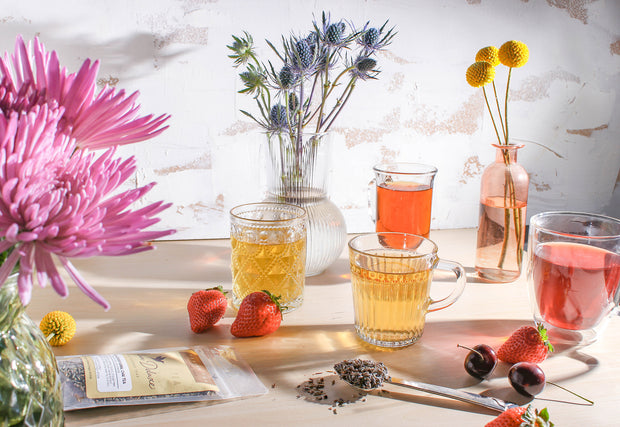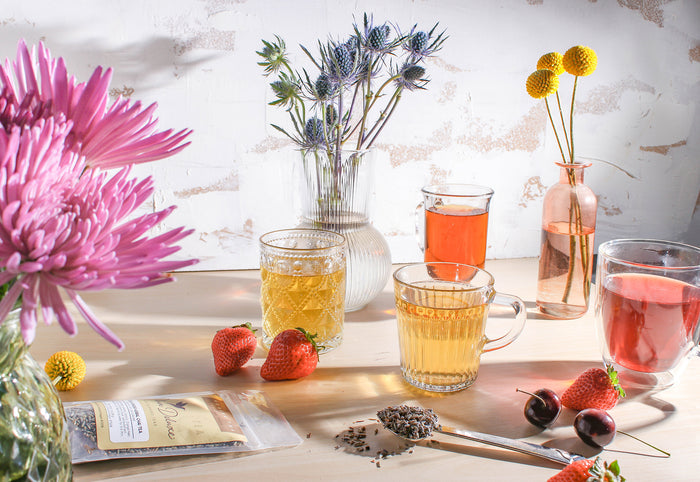
Enjoying a good cup of joe shouldn’t mean you need a PhD in espresso. Nor should you need a marketing background to know which phrases contain pertinent information and which ones are just salesmanship. I’ve broken down a few quintessential descriptions of our favorite type of bean to provide you with a crash course in Java Code.
Balance, Body, and Acidity
"This cup is balanced, clean, refreshing, and flavorful. Medium to full body, delicious aroma, medium to low acidity, with bittersweet chocolaty notes.” Kilambé Coffee
I began by recruiting an expert: Jill Jillian, coffee enthusiast and blogger. She kindly broke down the elements used to evaluate a coffee. At the most basic level there are four aspects used to define how coffee is experienced when you drink it: its acidity, its aroma, its body, and its flavor.
To say a coffee is balanced does not imply it has a future in gymnastics. It means the brew has no single discernible flavor characteristic such as floral, citrus, or chocolate. In well-balanced coffee the flavors have melded and that can be sensed evenly across the tongue. Balance is not synonymous with quality; it is a description of how a coffee tastes and smells. Many people enjoy coffee with strong flavor distinctions.

In describing coffee -- or any edible -- “body” refers to the mouthfeel. It isn’t the taste or temperature of your coffee but its textural qualities as it enters, fills, and leaves your mouth. Does it flow through like water? It’s light-bodied. If there is a syrupy quality -- a sort of thickness -- it is full-bodied. On a number scale, light would be 1, full would be 10, and the coffee described above falls in the 6 to 9 range.
Acidity denotes the presence of tangy, fruity, or wine-like flavor characteristics in a coffee. It is completely unrelated to acid content or pH Level, and therefore not a good predictor of your chances for getting heartburn. Adjectives such as bright, dry, sharp, or vibrant indicate a high level of acidity.

Roast, Altitude, and More
“For our darkest roast, we select only top-quality Arabica coffee from the highest altitudes of prime Latin American growing regions… perfect for retaining boldness and complexity under the intense heat of a deep roast.” Peet’s French Roast
Roast refers to the length of time and temperature at which the coffee beans are roasted. Consider roast a bit differently than the other factors because it doesn’t influence the way you experience the coffee when you drink it. While roast can influence the other four elements (aroma, acidity, body, flavor), it doesn't necessarily define them or guarantee a certain end product.
Coffee Shrub has an excellent pictorial of how the beans look at each benchmark in the process. At lighter roasts, the bean will exhibit more of its "origin flavor” -- the flavors inherent to the bean based on its variety, the soil, altitude, and weather conditions in the location where it was grown. As the beans darken, the flavor is created by the roasting process itself. In addition to altering its flavor, roasting also reduces a bean’s caffeine content. Surprise: lightly roasted coffee packs more punch than the more boldly flavored dark roasts!
There are two primary coffee varietals worldwide. Arabica beans make up 75-80% of world coffee production and have a lower level of caffeine per bean (08-1.4%). Robusta covers the other 20% and contains 1.7-4% caffeine per bean (source). One contributing factor to Arabica’s higher production rate is its relatively low caffeine content; Robusta’s higher concentration of the bitter alkaloid means the end product is also bitter.
Our coffee expert chooses only Arabica. While there is no guarantee that it isn’t on the low end of the quality scale, it offers the most potential for a satisfying coffee. “Buy Arabica, and there's at least a chance it was well grown, well processed, and well roasted, and could be a great cup of brew.”

Like all the best indulgences -- wine, tea, chocolate -- geography influences the flavor of coffee beans in a major way. All coffee grows in the tropics, but the altitude at which it is grown contributes significantly to a coffee’s taste profile. Elevations above 3,000 feet to 6,000 feet and beyond provide ideal growing conditions for the coffee tree. Cool mountain temperatures lengthen the maturation process of the trees, which imbues the coffee bean with more complex sugars, yielding deeper, more interesting flavors (source).
Good coffee isn’t hard to find, but good-tasting coffee can be because taste is subjective. Now that you know what the various characteristics are called and how they are ranked on their respective scales, you can start figuring out which flavor qualities suit you best. Remember that the traits are mutually exclusive; medium bodied doesn’t automatically mean medium roast, and high acidity won’t always go with bold flavor. Have fun discovering the character profile of your perfect cup of joe!

Coffee Credentials
You might notice your favorite coffee has a label within its label -- some stylized birds, or a frog, or even actual words. I am all for coffee that is natural, organic, gluten-free, small-batch, and eco- and grower-friendly, but proceed with caution. It isn’t hard to fall victim to greenwashing. Unless you have a personal relationship with your coffee grower and understand his methods of farming, check the label to make sure your coffee’s credentials support any environmental and employee benefit claims.
Photo Credits: author, pixabay, Cairns Dining, DirkvdM, and author.

![Spring Break Tea Variety Pack [6-Pack Variety of Flavors]](http://www.plumdeluxe.com/cdn/shop/files/spring-break-pack.jpg?v=1740682266&width=165)















